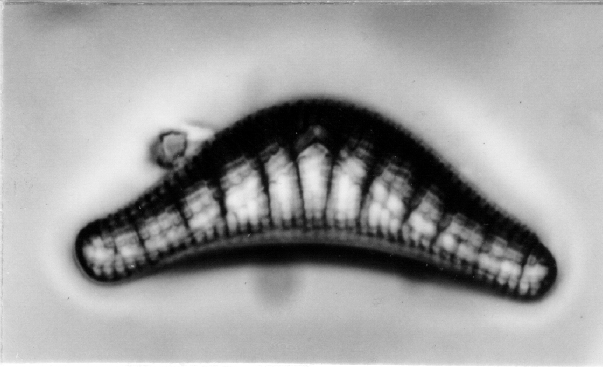Epithemia sorex Kutz
|
Length: 35 |
Width: 10 |
Striae: 12 |
Costae: 4 |
|
|
|
|
|
|
|
|
|
Collection 1157a |
More information |

This is a scanned in image from a previous
picture of the specimen. The slide was missing
so no new pictures could be taken.